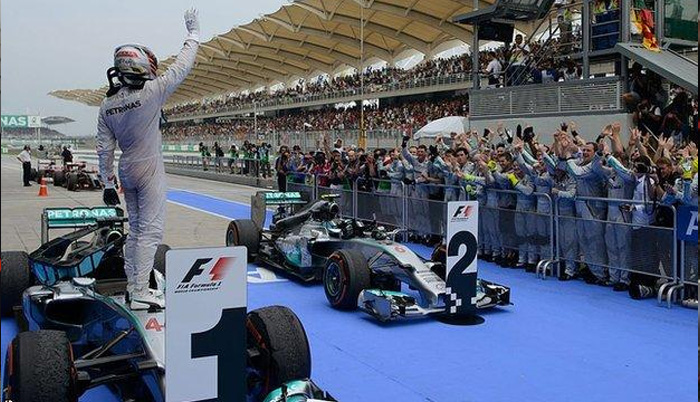![]() Home > World_Sp
Home > World_Sp
Malaysian Grand Prix: A final farewell to the Sepang circuit

![]() September 27th, 2017 | 10:06 AM |
September 27th, 2017 | 10:06 AM | ![]() 1228 views
1228 views
BBC SPORTS
With as much certainty as one can ever say these things, Formula 1 is going to Malaysia for the last time this weekend.
The country's government, which has funded the grand prix since 1999, has decided the race no longer justifies the investment.
And so Malaysia goes the way of other nations that joined what used to be Bernie Ecclestone's travelling circus in the last decade or two - a huge investment, a poster event for the country, and a white elephant at the end of it.
What will become of Sepang in the next 10 or 20 years? The race never attracted many fans, and no obvious motorsport infrastructure has grown.
If F1 has left no significant lasting impact on Malaysia - beyond the people who watch the races on television - the same can not necessarily be said the other way around.
In many ways, the first Malaysian Grand Prix heralded the start of a new era of F1, one in which Ecclestone joined forces with countries around the world that felt the need of some positive global PR and who were prepared to pay handsomely for it - in many cases by building a brand new state-of-the-art facility that was not really anywhere near anywhere.
And so after Malaysia blazed a trail, soon followed China, Bahrain, Turkey, Singapore, Abu Dhabi, South Korea, Russia and Azerbaijan.
Two of those - Turkey and South Korea - have already gone the way of Malaysia, as did India, which shares some characteristics of this general plan, but not the government support.
Ecclestone's time at the helm was ended at the start of this year, so it is somehow appropriate that the end of his reign is marked by the closing of the chapter at this track that set a template for a sport for two decades.
That approach looks like changing under new owners Liberty Media, for a focus on new races in city centres, that bring the sport to the people, rather than expecting the people to come to it - a reflection of the very different philosophy under which F1 is now being run.
The permanent tracks all shared a specific feature - they were designed and built by Ecclestone's favoured architect, Hermann Tilke, whose creations have been criticised for being bland and sterile.
Malaysia, his first attempt, was arguably his best. Surrounded by palm oil plantations about an hour outside the capital Kuala Lumpur, it features a layout that combines challenging corners with long straights that facilitate overtaking.
The high-speed left-right sweepers of Turns Five and Six are arguably the best on the circuit, but the flicks of Seven and Eight and the fast Esses of 12 and 13, which lead into the tricky braking-and-turning zone for 14, are all good.
Just going out there to watch is a feat of endurance in temperatures hovering above 30C in intense tropical sun and humidity.
For the drivers, the challenge can only be imagined. Cooking in four-layer overalls in cockpit temperatures of up to 50C for an hour and 40 minutes, Malaysia joins Singapore as the most demanding race on the calendar.
It is very often a good one to watch - for the some times intense racing, and the often unpredictable weather, with a thunderstorm of epic proportions never very far away. For many reasons, it deserves to go out with a bang.
Source:
courtesy of BBC SPORTS
by BBC SPORTS
If you have any stories or news that you would like to share with the global online community, please feel free to share it with us by contacting us directly at [email protected]